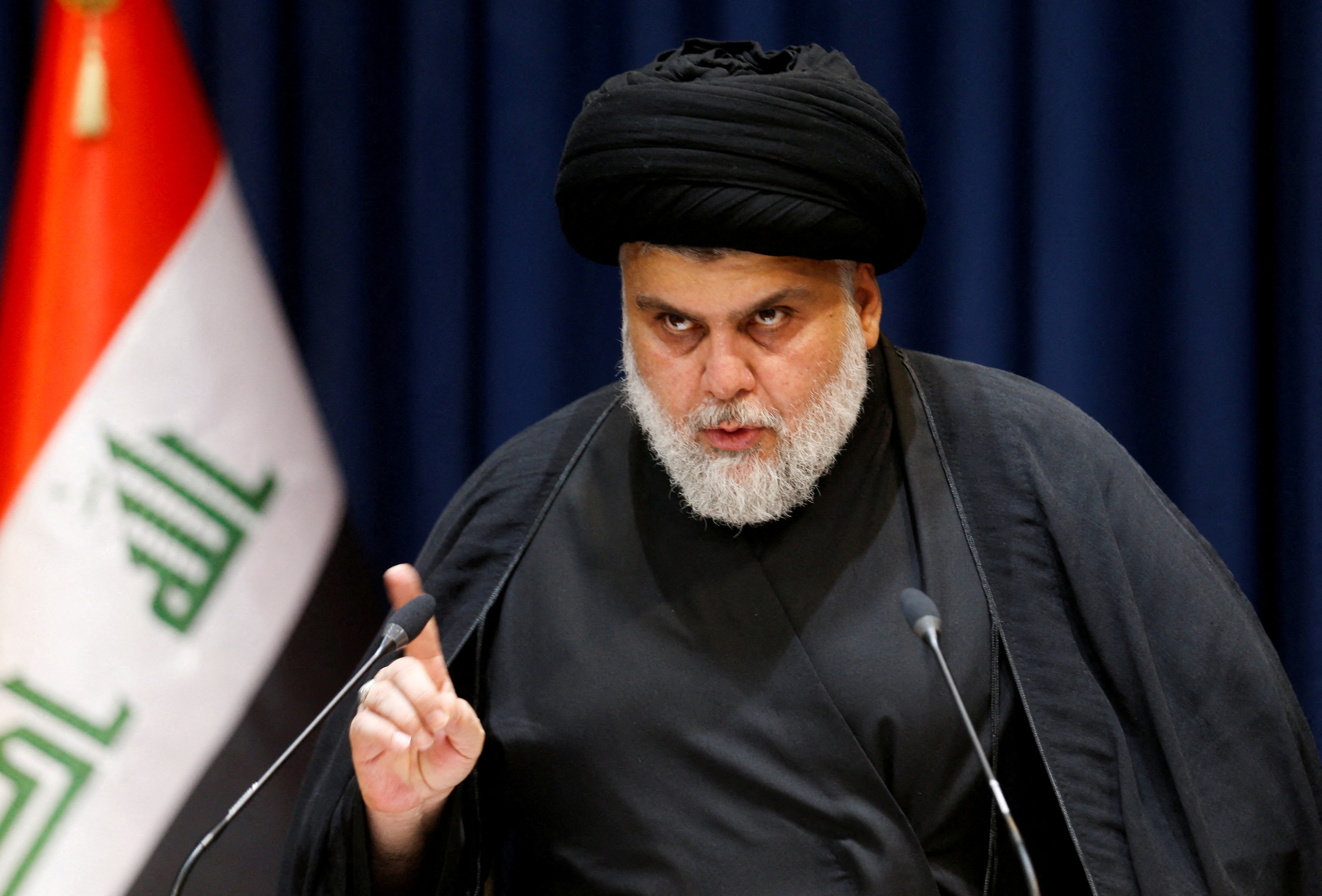
Muqtada al-Sadr, an Iraqi Shia scholar and militia leader rose to prestige after the end of Saddam Hussein’s government. Read to know why his supporters recently stormed the Iraqui presidential palace.
Who is Muqtada al-Sadr?
On Monday, Muqtada al-Sadr’s supporters stormed Iraq’s presidential palace in Bagdad after Sadr announced he was quitting politics following the long political deadlock in Iraq. The fortified Green zone of the capital houses diplomatic missions and government buildings. At least 23 of the Shia cleric’s supporters were killed after clashes progressed between the protesters and Iraq’s military in Baghdad. Over 380 were injured.
Muqtada al-Sadr is an Iraqui militia leader, Shia scholar, and the founder of the most powerful political fraction of Iraq. He rose to power after Saddam Hussein-led government fell.
In July, his followers stormed the parliament, occupying the area as al-Sadr released a statement on Twitter, urging them to “return safely to your homes”. Following it, protestors moved out and cleared the area. The incident earlier this year gives a clear view of his power in mobilizing and controlling huge groups of grassroots followers. Similarly, in 2016, the militant’s followers stormed the region and the parliament, demanding a political reformation.

While the Shia scholar seems like the only option today, he was enemy number one following the fall of Saddam Hussein. As per a 2004 article in The Guardian, Lieutenant General Ricardo Sanchez stated “the mission of US forces is to kill or capture Muqtada al-Sadr”. In 2003, the Sadrist and the affiliated militia (Mahdi army) also began resisting US troops. The militias under al-Sadr are now known as ‘peace companies’. However, his growing influence could pose problems for both Iran and the US as he damnded the departure of the remaining US troops.
More on the current happenings

The Sadrist movement is at its strongest in Iraq. The nationalist movement draws power from the support offered by the poor of the Shia community across the nation. The members of the movement have taken several senior jobs across ministries and are making their mark. 10 months after the last election, Iraq has been unsuccessful in forming a new government. This is the lost period since the US invasions the political order is in chaos.
However, this time around, the deadlock is driven by vendettas of the elite. The fight is between Shia leaders Prime Minister Nouri al-Maliki and al-Sadr. The former PM is serving with great help from the nation and al-Sadr is challenging Iran’s authority over Iraq. The latter’s religious influence won the most seats in October’s elections. However, political parties failed to reach the much-needed two-thirds majority for choosing a president. After negotiations, al-Sadr withdrew his bloc and announced the news of leaving future talks. However, the expectations of street protests are taking over Baghdad.
Al-Maliki, al-Sadr’s arch-rival and head of the Coordination Framework replaced al-Sadr’s resigned MPs from the Iran Parliament. Mohammed al-Sudani’s announcement as the PM nominee is seen as a figure through whom Al-Maliki can exert control by al-Sadr loyalists. Al-Sudani is Iran’s former labor and social affairs minister. Currently, neither of the two fractions can afford to be away from the process as both have a lot to lose. Civil servants from both parties are in Iraqi institutions ready to do their bidding when needed. Iran is trying its best to work behind the scenes and stitch a fragmented Shiite Muslim elite. But, the electoral failure of the Iranian-backed parties is reflecting a dramatic turnaround in the recent elections.






